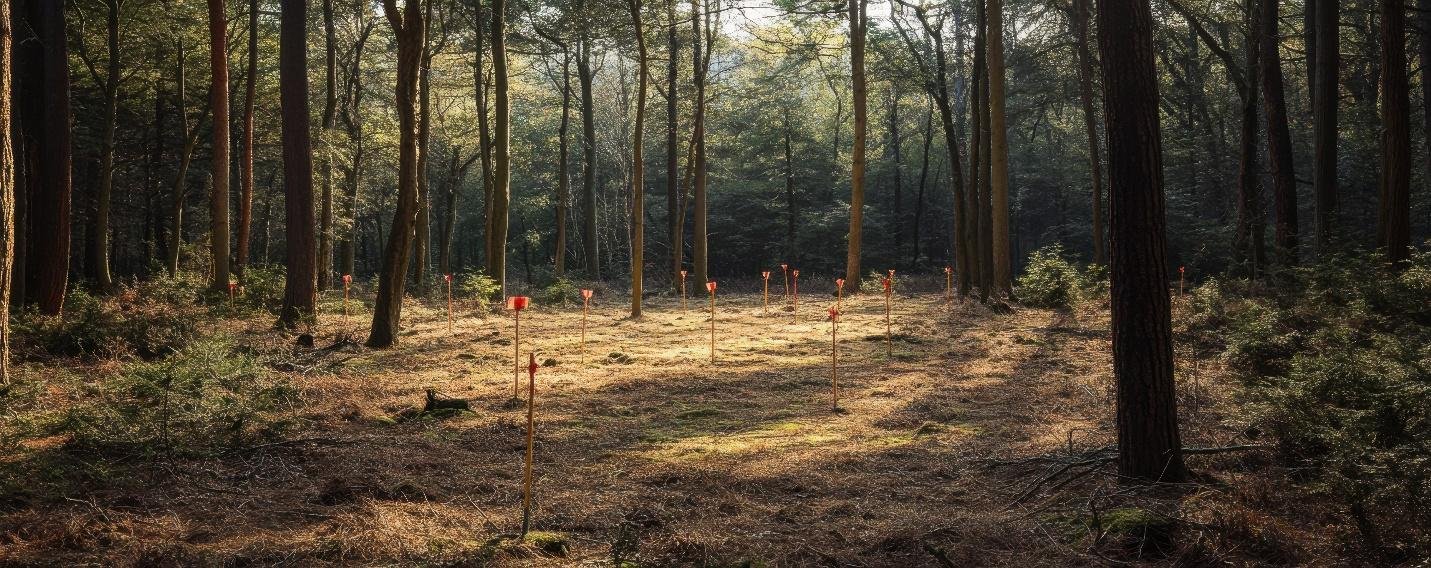
Image: drone hovering over river in field.
The Environment Act’s biodiversity net gain (BNG) legislation has a 2-year phasing-in period, which ends in November 2023. That means developers must ensure they leave an area of land more ecologically rich and diverse than it was before they started development. Otherwise, you don’t get planning permission.
The straightforward necessity to boost quantifiable biodiversity from a development scheme by at least 10% and to do so according to a DEFRA-written habitat metric offers a real chance to restore genuine biodiversity in a development impact area.
The last five decades have seen a 60% drop taken in UK biodiversity. There is no sign of this trend reversing. This raises two questions:
- what does a really good development impact assessment look like for biodiversity?
- what opportunities/options are taken by developers and their environmental consultants to make the area around a development more biodiverse than it was predevelopment?
Sustainable Development with Biodiversity
Biodiversity Net Gain (BNG) is something a lot of local authorities across the UK are already implementing to counter biodiversity loss and ensure at the very least a net benefit for local life forms and ecosystems.
It’s now pretty common for planning authorities in England to use BNG as a policy framework under which to work with developers who wish to build and to persuade them to contribute in some way to a net biodiversity gain. This means making sure that any site layout is as “intelligent” as it can be, so that local biodiversity doesn’t encounter any poor outcomes once the urban infill is finished. This needs to be achieved without losing too much property density and profit along the way and without going too overboard in the green space department.
BNG and the mitigation hierarchy are potent tools for reducing ecological impacts from development and for steering sustainable development in its appropriate direction.
Developers often use a national Habitat Bank that has established and launched BNG Units. They can do so via us. This is an innovative option that makes necessary and useful compliance with BNG mandatory.

Image: plot of land with flags in ground.
What Are the Biodiversity Net Gain Options?
We are especially concerned about urban areas because the demand for development is high and the opportunities to provide BNG onsite are limited. While there is no limit on how far offsite BNG can be from the development site it relates to, the BNG multipliers in the Biodiversity Metric reward developers who deliver BNG as close to the development site as possible. This kind of delivery makes sense in the context of the mitigation hierarchy.
Habitat Banks are secured, large-scale, landscape sites where high-quality semi-natural habitats are constructed or restored to offset the ecological damage done by land-use change. In these Habitat Banks, using the best practice ecological principles, nature recovery is “bigger, better, and more joined up.” The outcomes achieved are certainly much better for the nature involved than having a Habitat Bank anywhere close to them.
An ideal habitat creation site can be any size, but it is more impactful if it is scaled up to between 20 and 100 hectares, according to Habitat Banks. The site should be well-located to meet the broader ecological recovery objectives of an area. That means it should connect with other sites that are also recovering, and should enhance existing habitats that are already high priorities for conservation, like wetlands and old-growth forests.
Some Habitat Banks are investing hundreds of millions of pounds in these splendid spaces, enabling nature to recover, re-establish itself, and thrive. This is not only about mending the rural environment; it is also about reinvestment in rural communities. That kind of funding is what one would expect to receive from a nonprofit organization. Such a supply of BNG units enable a residential developer to satisfy their BNG obligations.
The model is simple, allowing the developer to pay and step back with no risk exposure.
The developer can be certain that the model complies completely with planning rules and offers both supply and cost certainty.
We think that bringing about the necessary changes in the natural environment in this country will, at most, cost no more than half of one percent (0.5%) of the total value of a standard development project.
Solution for Developers and their Biodiversity Net Gain Requirements
BNG is establishing a private market that provides biodiversity restoration with a visibility more commonly associated with private-sector projects that are not nearly as efficient. BNG can achieve excellent ecological results while also delivering effective solutions to some of our housing problems, for instance.
We estimate that there could be demand for as many as 6,200 offsite BNG Units each year, which would bring in an estimated market value of £135m per year. Each Unit probably costs on the order of £20,000-25,000, depending on the kind of development and its size.
Mark Pendry, who heads sustainability at Legal and General Modular Homes, and who is in charge of recently snagged BNG Units from Environment Bank agrees.
Having an ecologist as a member of the design team is beneficial for the developer. The ecologist is in the best position to offer advice on avoiding habitat loss and maximizing potential habitat gain after construction is finished.
Our constant effort is directed toward ensuring the most effective protection, retention, and enhancement of habitats within BNG Unit boundaries. To accomplish that, we now incorporate a habitat assessment early in the planning process—frequently even before acquiring a site.
Even so, our onsite measures do not always yield net gains. That’s why we are now sourcing BNG Units to help developers with their projects in a way that results in a positive outcome: an overall increase in biodiversity.


